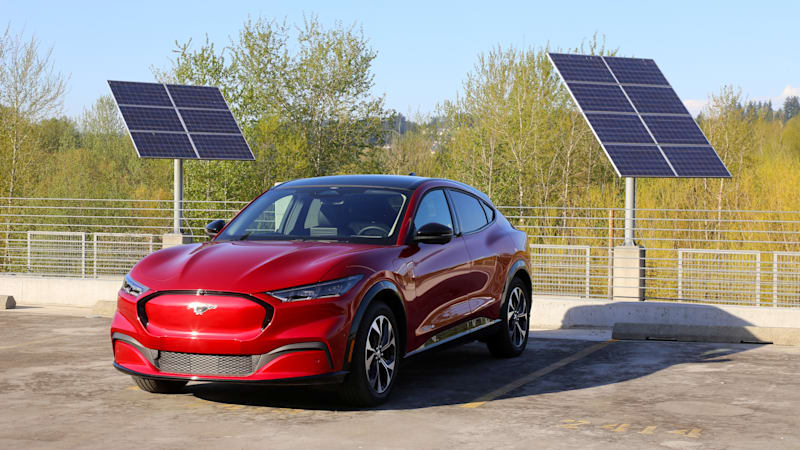A recent week in a 2021 Ford Mustang Mach-E First Edition provided a convincing demonstration, as it has convinced my colleagues, that this is an EV all of America can get behind. It has the looks, full stop, no need to qualify it as good-looking “for an EV.” It has smooth, plentiful power. It offers the somewhat-tall crossover ride height Americans love. It has the nicest interior of any Ford you’ve ever been in — you could almost say luxurious. This AWD model is EPA-rated at a range of 211 miles (RWD models are rated at 230), but it can certainly exceed that. If Ford plays its cards right, the Mach-E will be a smash hit.
During a fun week driving it, I became curious about some user-experience details, the way one might really drill down if serious about buying the car. Not criticisms, just points of curiosity. So what follows are a few observations, along with some questions and actual answers from a Ford engineer. We’ve already discussed how the Mach-E drives in our first review and in subsequent driving reviews here and here and here. So this post is strictly about the small stuff.
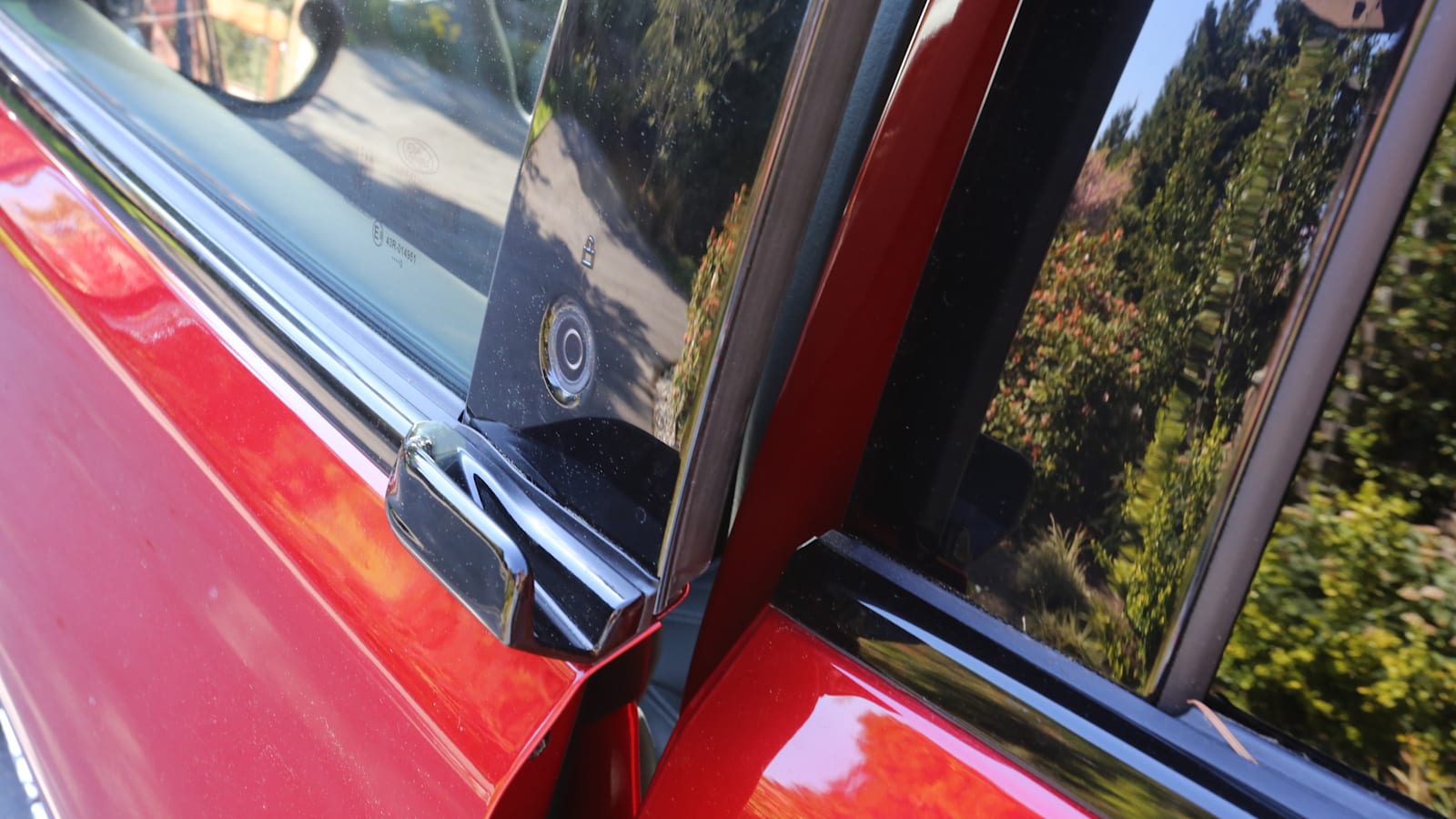

The doors
A curious thing about the Mach-E presents itself before you even step inside. To open a door, you push a small round button, which causes the door to pop ajar. On the front doors, there is a handle — well, not a handle like we’re used to. It’s more of a fixed metal lip or hook (shown at left above), that you can grab to pull the door open. Meanwhile, the rear doors (at right) don’t have such a handle, but that’s no problem: The door pops open enough that you can easily grasp the inside edge and open it the rest of the way.
Personal opinion here, but the front handle/hooks, while unobtrusive, are unnecessary. You’ll find yourself just grabbing the inside edge of the front door, since that’s what you do in back. It would be sleeker to just leave the handles off.
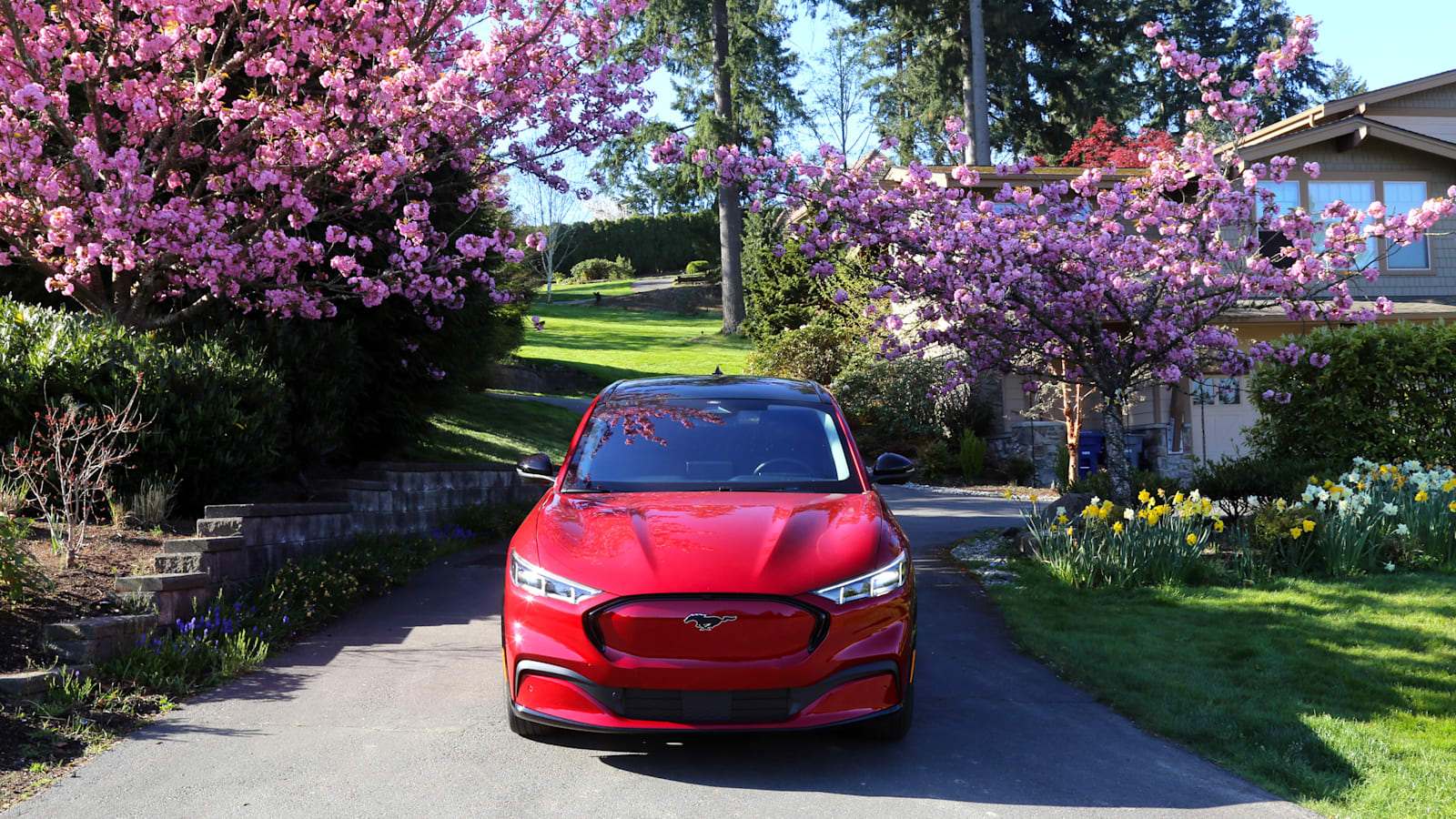
No eco
When you start the car, you’ll notice there’s no eco meter on the Mach-E’s instrument cluster. Usually an EV has a gauge that offers immediate feedback on acceleration and regeneration. Press the accelerator, needle goes up; hit the brake, needle goes down — truthfully, it doesn’t offer much useful information. And that was Ford’s conclusion in skipping it.
“We wanted to balance the information customers care about with the amount of information display space we have,” said Leeway Ho, Ford’s engineering supervisor for the Mach-E. “The goal was to provide information that was valuable to the customer without detracting from the aesthetically pleasing digital design we had chosen.”
What the Mach-E provides instead, displayed on the infotainment screen, is a “How’s my driving?” cumulative percentage rating of your trip acceleration, deceleration and speed.
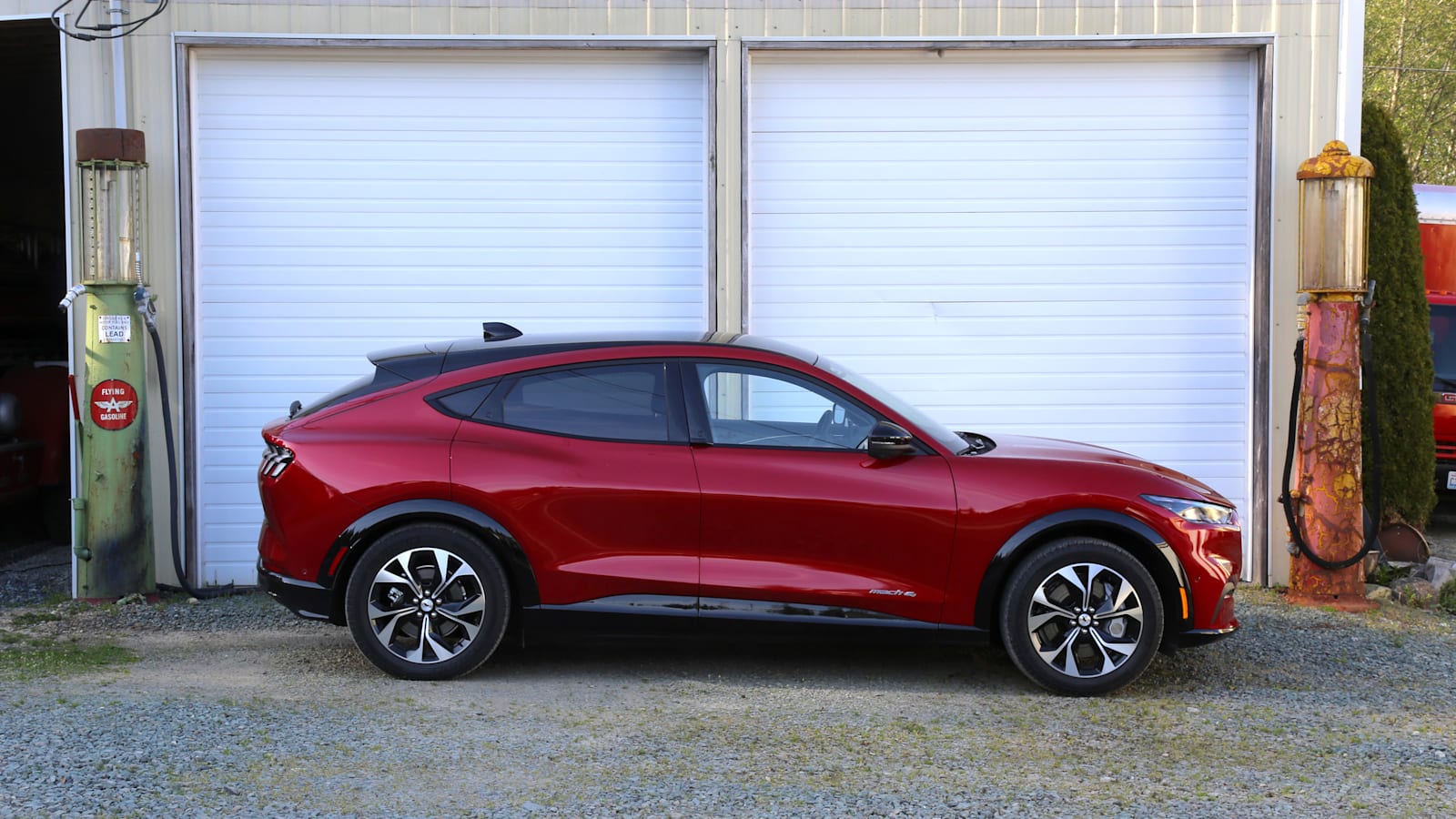
Range impressions
You don’t have to baby this car, don’t have to sweat over every acceleration or, literally, sweat over every degree of temperature on the climate controls. It has plenty of range. For reasons I’ll explain momentarily, I didn’t perform a full weeklong range test in the Mach-E. But one backroads evening drive of 78 miles consumed 28% of battery, at a rate of 4.2 miles/kWh. At that rate, a full 100% charge of the 68 kWh battery would equal a range of 278 miles. Now, 4.2 m/kWh is driving economy that’s either extremely good or extremely lucky. The terrain that night was rolling hills, and the ambient temperature was mild, so conditions were favorable. (Other outings were in the range of 3.6-4.0.) But let’s work the equation in the other direction: To match the EPA’s 211-mile rating, the least you would have to achieve is 3.1 miles/kWh, which should be doable by anyone, in anything but extreme conditions.
@autoblog
A glitch in the Mustang Mach-E trip computer. @Ford ##Autoblog ##FordMustang ##MachE ##ev ##carsoftiktok
♬ original sound – Autoblog
Trip computer
This press car’s trip computer tripped up plans for a full range test. The computer has three options: “This trip,” along with Trip 1 and Trip 2. It turns out that “This Trip” meant only a leg of a trip. If you stop somewhere along the way for lunch and turn off the car, the data resets to zero. After losing a couple of hours of data that way, it was clear I’d need to use Trip 1 or 2 going forward; however, attempts to reset those merely cleared the mileage and duration numbers — the miles/kWh calculation would not zero out. It remained stuck on 3.0 kWh (as seen in the video above), which perhaps was a cumulative figure for the nearly 4,000 lifetime miles on the car. (If so, that’s a decent number considering how many automotive writers have had a crack at flogging this vehicle.)
Ford’s Ho thanked me for flagging the issue and said his team would look into it. Now, this Mach-E was a preproduction model, so in fairness the problem could have been unique to the vehicle. To check that, I dropped into a local Ford store to try it on a production car. Resetting Trip 1 cleared the numbers — good news. But then an attempt to reset Trip 2 turned up the problem. Confusing things further, after making two or three more attempts, the m/kWh tally finally cleared. This is a minor issue that will presumably be addressed in an over-the-air update. But for my week in the preproduction car, fully tracking range and driving efficiency wasn’t in the cards.
Charging
After charging the Mach-E for a day and night, it went to 96%. Which was a pleasant surprise — as you probably know, for battery longevity automakers usually suggest charging to just 80%. Somewhere within their infotainment systems there is a charging user interface you can use to set the 80% limit. But I could find no such setting in the Mach-E.
Ho explained: “The vehicle software manages charge rate and level, taking battery life into consideration. For example, while DC fast charging, the vehicle will slow down the charge rate once the battery reaches an 80% state of charge.”
So no worries, the car figures it all out. Because I had snail-charged the Mach-E from a 120-volt outlet, regarded as the most battery-friendly charging rate, the car was happy to permit a full charge.
@autoblog
The unusual UX of the Mach-E rotary shifter. ##Autoblog ##FordMustang ##MustangMachE ##EV ##carsoftiktok
♬ original sound – Autoblog
The shifter dial
When using a traditional shift lever, you know you’ve put the car in park when you reach the shifter’s physical limit. Shove it forward until it won’t go any further. Likewise, on rotary shifters, you expect to twist the dial until it won’t twist anymore. But when twisting the Mach-E’s dial shifter, there is no stop. The “P” lights up to let you know you’re in Park, but you can keep twirling the dial past that point. Without the feel of hitting an end point, I had to look down at the shifter to confirm it was in Park. A lot of people probably do this by feel.
But the lack of a stop point was intentional. “Our extensive customer research showed that users understand ‘P’ and ‘D’ as the two end points and the most commonly used positions,” Ho said, “so they just twirl freely and know there’s no danger of overshooting their desired position, which is what a physical stop prevents. A quick rotation of the wrist without discreetly counting indentations will put the car into ‘P’ or ‘D,’ depending upon which way you’re rotating, without the harsh endstop you would encounter otherwise. In addition, the customer will see Park position in the cluster, and the car provides a subtle audible feedback when you’ve selected ‘P.’”
This took some getting used to, and I for one still value the tactile feedback of hitting the stop. But this design does make you look at the dashboard or shifter display for visual confirmation, which is something you should do on any transmission. And keep in mind there’s a failsafe: When you press the ignition off button, the car automatically puts itself into park.
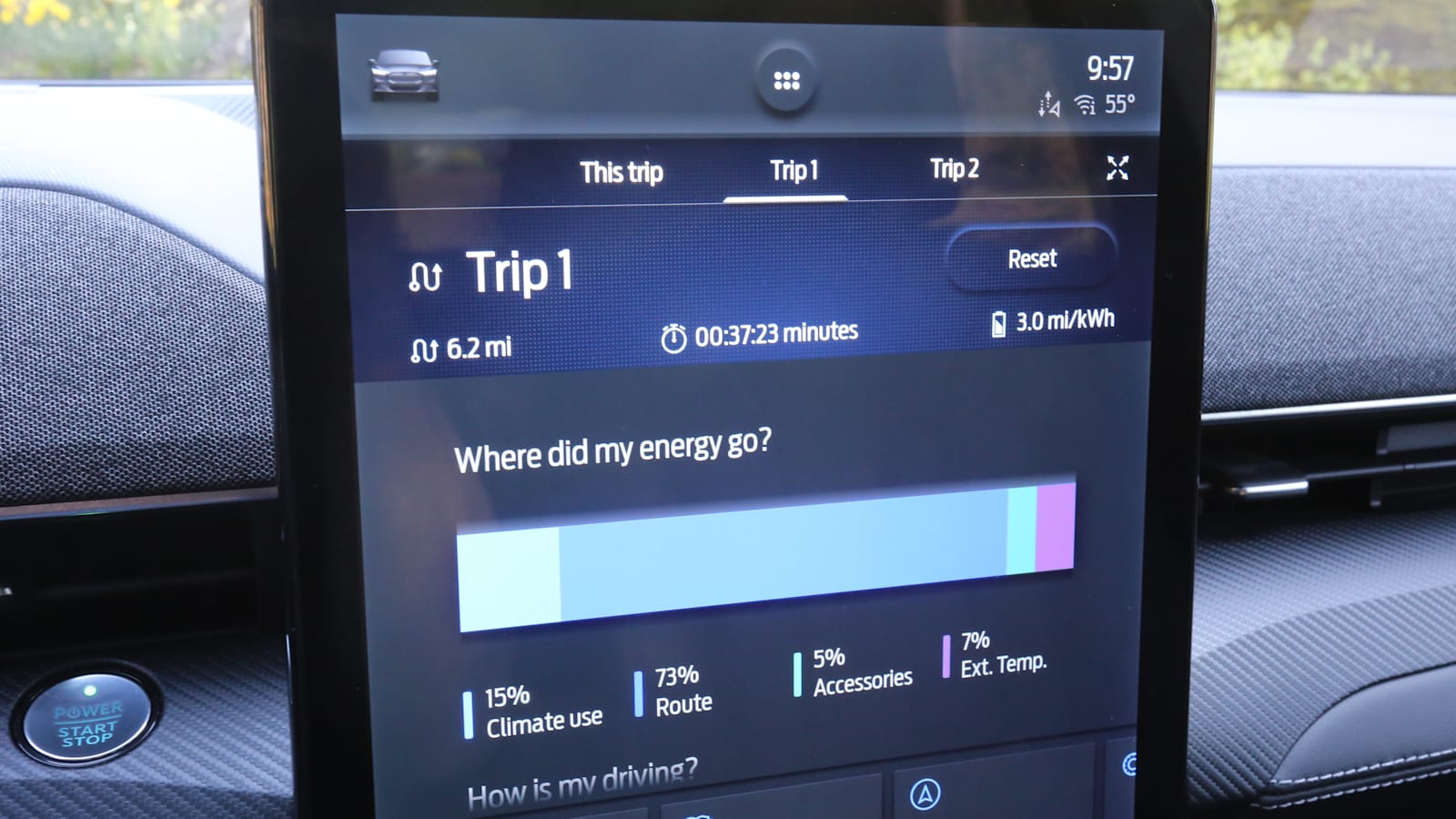
‘Where did my energy go?’
The infotainment screen has an interesting display: a bar chart titled “Where did my energy go?” breaks down how battery power is being used, in categories of climate use, route, accessories and external temperature. Which is a neat idea, but it sometimes offered puzzling information. For much of the aforementioned 78-mile outing, it said that between 7% to 9% of battery energy was being lost to external temperature. Which seemed odd since it was 63 degrees outside — not too hot, not too cold, presumably Goldilocks conditions for an EV.
The information in the display changed frequently and accumulated for the duration of a trip computer setting. “It is a rolling average, so it updates continuously as you drive but always takes into account your previous driving usage/behavior,” Ho explained. After the puzzling ambient temperature reading from that evening, the display made more sense on other outings, showing the vast majority of battery going to traction. You could see this feature being informative in hot and cold climates, and as feedback for using the climate controls more efficiently.
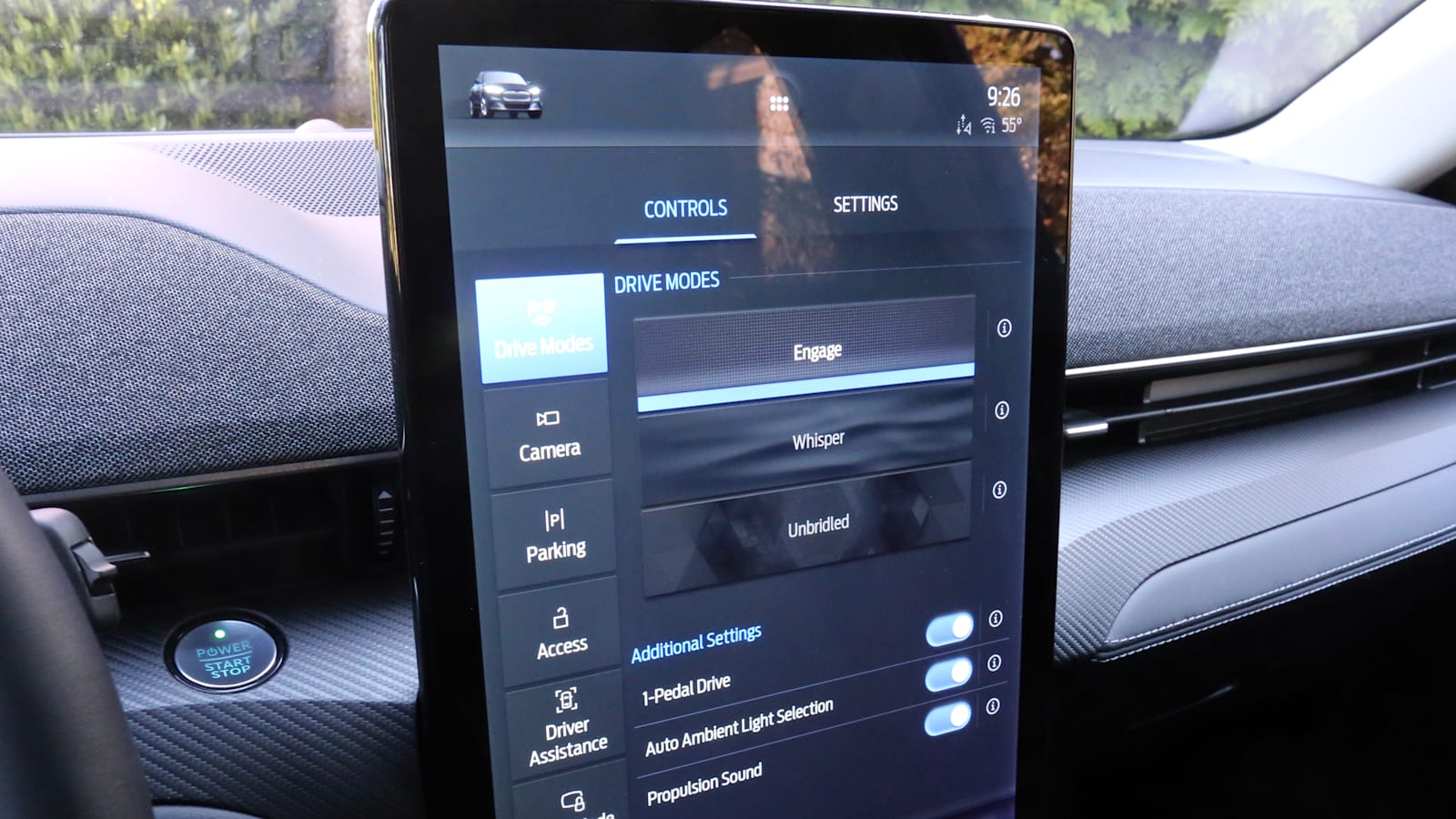
Regeneration
To someone new to the Mach-E, regeneration levels seemed a bit scattered:
- Whisper mode has coasting without regen.
Engage and Unbridled, the other two driving modes, each has its own level of regen.
A separate switch on the display (above) activates full one-pedal driving.
And in situations where you hit a steep downhill grade or otherwise want to throw out the anchor in a hurry, there’s the “L” button in the middle of the shifter dial.
In other words, regeneration levels aren’t controlled in one place the way some EVs do it, say by using steering-wheel paddles. Ho explained Ford’s approach:
“We consider lift pedal behavior and regen to be an integral part of our experiences provided by the drive modes, not a uniquely controlled/selectable aspect of vehicle behavior,” he said. “The levels were custom-tuned to match each selectable drive experience. If at any time the customer desires more lift pedal regen while in Whisper or Engage modes, such as on a steep hill where they might desire ‘engine braking,’ they can hit the ‘L’ button, at which point the lift pedal behavior matches the level seen in Unbridled mode. One-pedal drive is an overlay on top of the drive experiences for those who want to use just the accelerator pedal to manage vehicle speed, not a dedicated tool for changing regen levels.”
For the most part, I drove in Engage mode and used the “L” button when desired. That was a pretty successful combination. The one-pedal setting works great too if you prefer that.
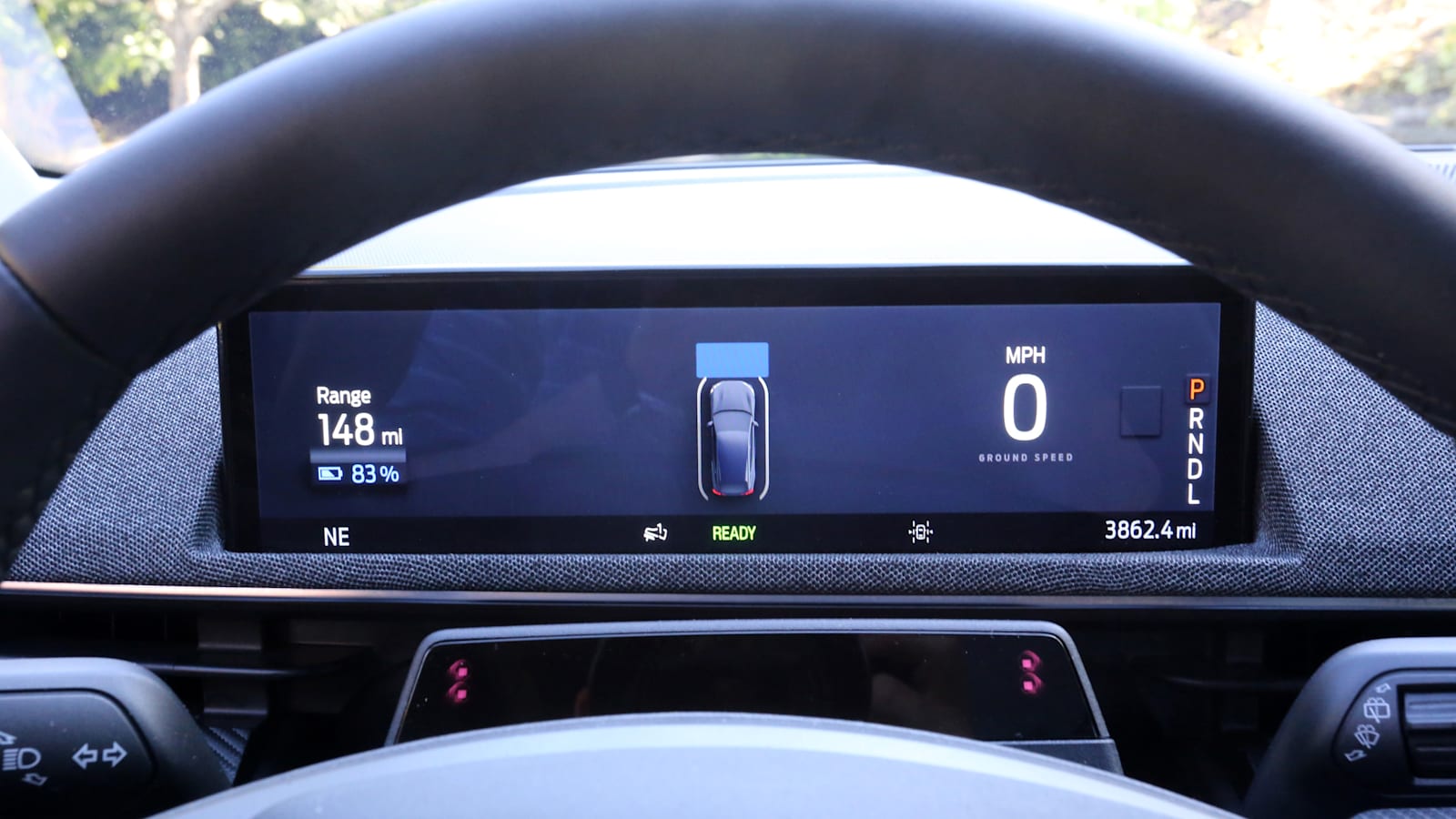
Its guess is not as good as yours
The “guessometer,” as EV owners call it, is the running prediction of how many miles of range you have left on a charge. The guessometer in the Mach-E seemed no more accurate than those in other electric vehicles. At one point, with 52% of battery left, it said there were only 82 miles of range remaining. But this immediately followed the 78-mile trip that had consumed just 28% of battery, so if the guessometer had extrapolated correctly from that, the remaining range calculation should have been much higher. Also, after charging to 96%, the range reading was 180 miles. (Again, the EPA says 211, and your real-world range should easily beat that.)
And at 83% battery, as shown in the image above, real-world range should be far more than 140 miles — closer to 170 at a minimum, and probably over 200.
As with any electric car, don’t put much stock in the guessometer. These things will always err on the side of too conservative.
Battery percentage is the one piece of data you can always count on.
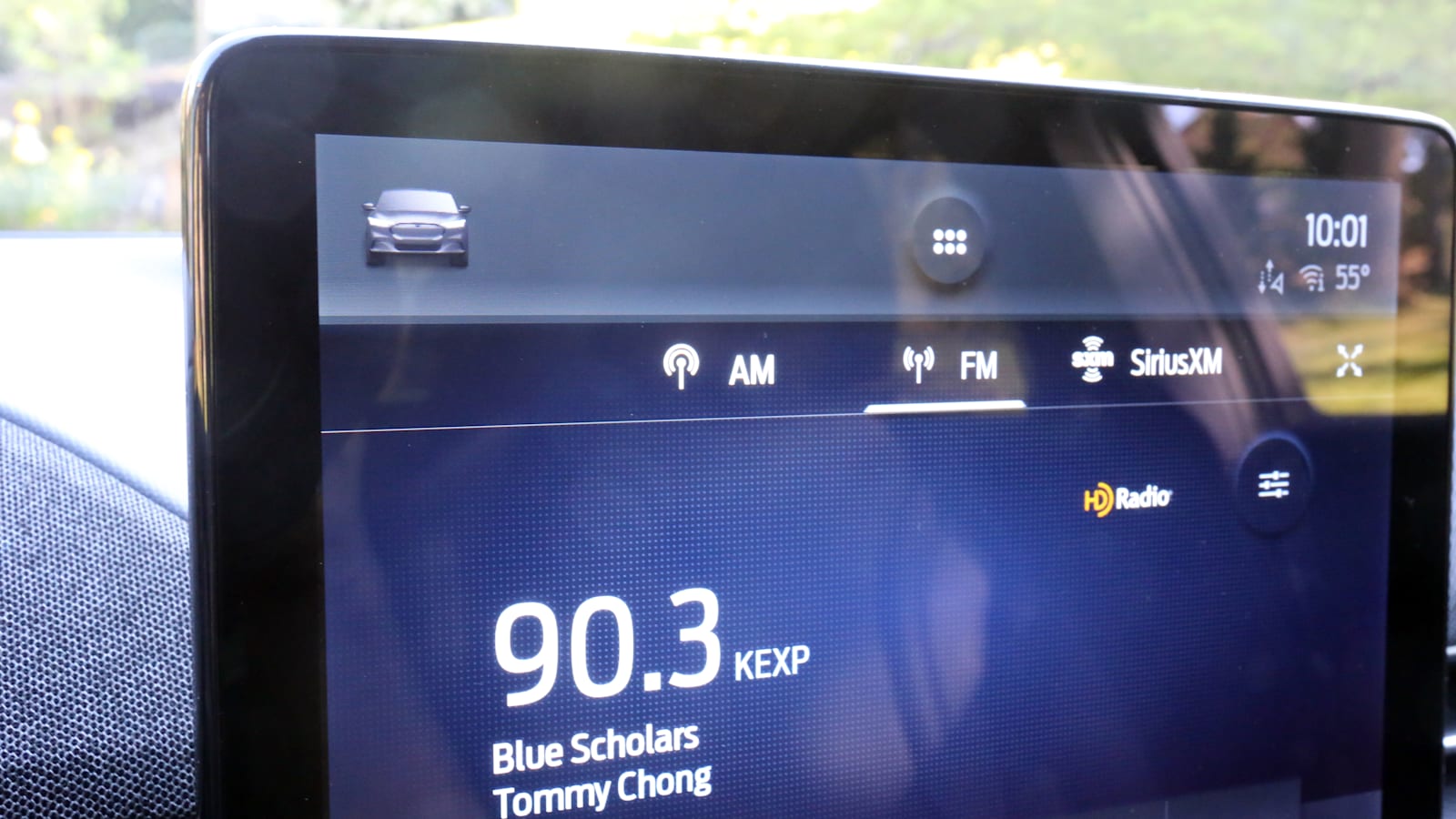

Geez that screen is big
It’s been said before, but the 15.5-inch vertical Mach-E Sync 4A touchscreen is huge. It startles you when you get in the car, though you’ll probably get used to it after a couple weeks of saying “Wow!” And it probably won’t seem as big when it gets installed in upcoming versions of the F-150 and Expedition. As we’ve noted in past reviews, there’s no Home button to this system, but you eventually realize that the little picture of the vehicle at the screen’s upper left is the key to getting around: Touch it to toggle between a straight-on view and a three-quarters view (as seen above), and the screen setup changes with it. The touchscreen functioned well, responded quickly, and as a matter of usability, you can’t possibly miss hitting anything you try to tap on — the smallest type onscreen was 16 or 18 points, and the biggest was the size of a newspaper headline.

The stereo
Finally, you’ve gotta love it when a pet peeve gets fixed: You know how you’ll be listening to the radio when a favorite song comes on, and you realize the sound needs adjusting? On a lot of systems, you have to puzzle over things for a moment, back out of the radio page, look around for the Settings menu, then find Sound to adjust the bass, treble, balance, etc. All while grumbling, “Why do I have to hunt for this? Why aren’t the sound settings part of the radio?” On the Mach-E, they are. A button at the upper right on the radio screen leads you directly to the sound adjustments. Nice. They’re still under the general Settings menu too, but the button is a welcome shortcut. The Bang & Olufsen system sounds good, by the way.
